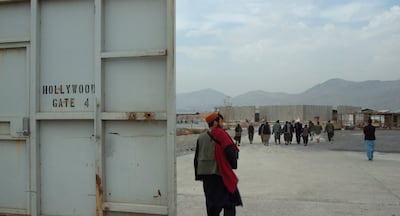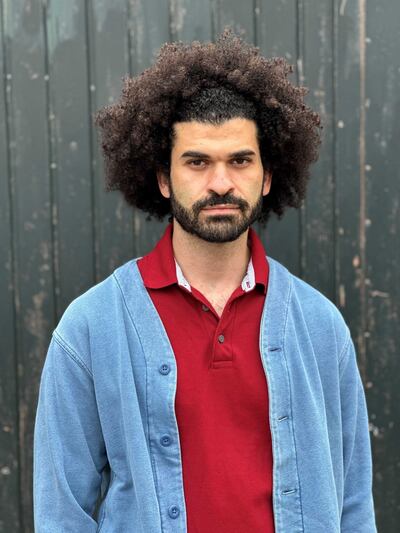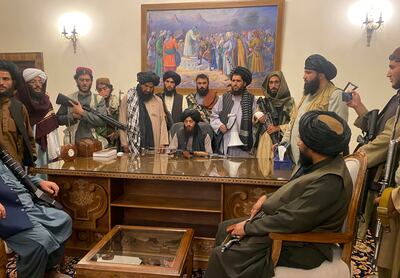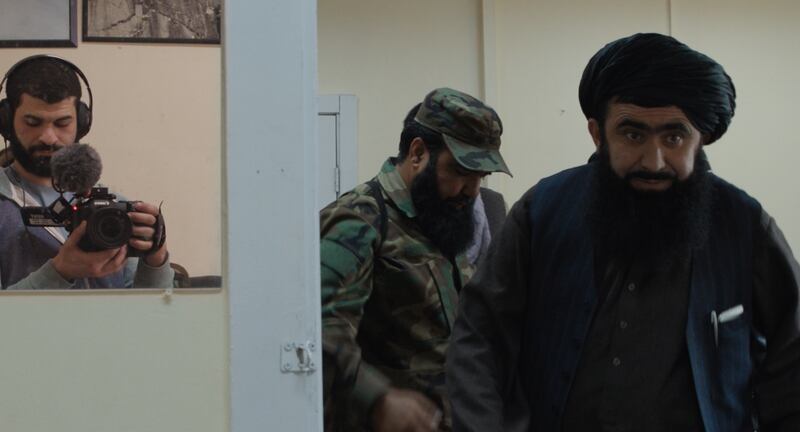Above all else, Ibrahim Nash’at had one goal with his latest work Hollywoodgate, which was filmed while embedded with the Taliban after the US military left.
“We hope that this movie will make people, when they leave the cinema, feel for the Afghans,” he says when we meet at this year’s Venice Film Festival. “These are the people that were abandoned.”
The Egyptian documentary filmmaker spent a year with the group after American forces left Afghanistan in August 2021, triggering a humanitarian crisis.
It’s day one of the festival and Nash’at, a former journalist now living in Berlin, looks exhausted. That’s what 12 months, on and off, shooting footage of Taliban commanders and soldiers will do to a person. “The body keeps a score, no?” he says, with a wry smile.
“Being with the Taliban is not an easy thing to do. And the healing from that is a long process. In the end, I hoped I didn’t really fail the Afghans. The moment I watched the last cut of the film, I knew I didn’t fail. This is healing more than anything you can imagine.”

The film, which plays out of competition at the prestigious Italian festival, could certainly be paired with Matthew Heineman’s film Retrograde, which observes American troops as they are given the orders to leave Kabul.
“Matthew Heineman is an incredible filmmaker and he’s a good inspiration,” says Nash’at, “but the films are different. One is about how the Americans left the country and the other is about how the situation – 20 years of war – has left Afghanistan. It’s not about the moment of Americans leaving at all.”
Indeed, the film follows what happens when the Taliban storm the Hollywood Gate complex, said to be a former CIA base in Kabul. There, they find the detritus of a military operation: abandoned M16s and helicopters and tactical fighter jets in disrepair.
This was hardly unique. According to the Pentagon, $7.12 billion worth of equipment was left behind in Afghanistan. As the film notes, it is not known how much of this has fallen into the hands of the Taliban.

Hollywoodgate traces the Taliban’s “transition from guerrilla fighters into a military regime”, says producer Shane Boris, who is sitting alongside Nash’at. Gradually, two protagonists emerge – newly assigned Air Force commander Malawi Mansour and the ambitious Mukhtar, looking to ascend the ranks of the Taliban. “It’s really hard to make a film with only antagonists,” nods Nash’at, who ensured he and his camera remained dispassionate observers.
What, though, inspired him to take on the Taliban? Born in Cairo, it seems his upbringing played a part. “I come from a very religious family and that allows me to understand how can I deal with people of radical ideology," he says.
"From a young age, I was exposed to these kinds of people … who saw the Taliban as heroes.” It led him into journalism, working across Europe and the Middle East. “I had the chance to film so many world leaders. All this made me think I could convince the Taliban to allow me to film them.”
Curiously, he had little trouble gaining access to the Taliban. “When I went there, I found them in a state of euphoria, of winning the war,” he says.
Aside from the machinery of conflict, they found in Kabul the very notion of using the media as a propaganda tool was a new weapon that the Taliban was beginning to explore, which explains how Nash’at was able to film with relative ease. “The hardest part was not getting the access, but keeping the access," he adds.

They regularly checked what he shot. “So you show them footage and you always try to pick the footage where they look really nice," he says. "They were really happy.” Smartly, he never connected his microphone to the camera, so when they played back what was filmed, their dialogue was largely inaudible – so they had no way of hearing what they said. Lines like “an uncovered woman is like an unwrapped chocolate” – in other words, dirty and discarded – expose their true colours.
Such was the emotional stress, Nash’at didn’t film with them for a solid year but went back and forth. “I would always leave in the times when I know things are slow," he says.
When he returned to edit the film, he knew he couldn’t misrepresent what he saw. “We were sitting in a room, saying: ‘How can we tell this story? How can we make this reachable to the world without delivering propaganda for the Taliban?’ If maybe someone somehow sees it as propaganda for the Taliban … that was keeping us restless.”
Now that the film has been released, does he fear reprisals from the Taliban? Nash’at shrugs, unwilling to think too deeply about such possibilities. “Whatever the outcome – them going crazy about it or them ignoring it – I take the consequences of my actions,” he says, defiantly.
“Having said that, we are hopefully taking care very well of security aspects. There’s always a worry, of course. One will die the day one is supposed to die. Let it be from this or drinking water in the wrong place.”






